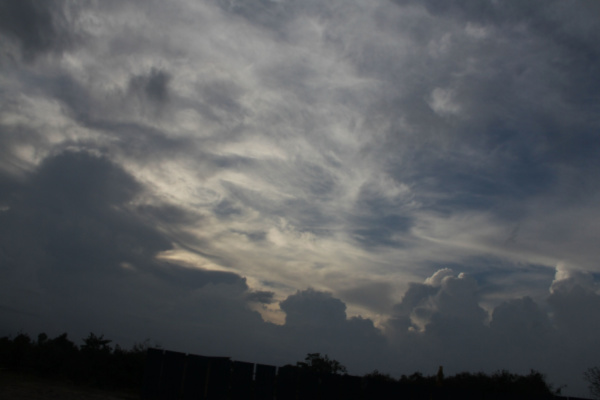Severe thunderstorms are known for producing hazards such as dangerous winds, damaging hail and large, destructive tornadoes. But medical experts say there’s another reason to take precautions before a storm. “Thunderstorm asthma” was first reported in the 1980s in England and Australia, and doctors have described it as an attack of asthma that starts or worsens after a thunderstorm.
As AccuWeather reports, in general, rain tends to lower pollen count, washing away the particles and sometimes bringing relief to many with asthma whose symptoms are triggered by allergies. But in the case of thunderstorms, the strong winds they bring kick up the pollen before it can be washed away.
“Before a thunderstorm, you get that big line of intense winds coming in and the downdraft and the temperature change. So that’s stirring up lots of pollen granules,” says Dr. Brian Christman, a professor of medicine at Vanderbilt University Medical Center.
According to Harvard Health, cold downdrafts, or where the wind descends from the storm clouds toward the ground, concentrate air particles like pollen and mold, which are then swept up into clouds where there is high humidity. Here, wind, humidity and lightning break the particles down to a size small enough to enter the nose, sinuses and lungs. Wind gusts then concentrate these small particles, so large amounts can be inhaled.
“Usually, a gentle rainstorm is perfect, and it decreases the problem. Everyone does better,” Christman said. “But there’s this rare circumstance with really rapid winds and certain climatic conditions that can really set us up for a perfect storm.”
Temperature and humidity can also worsen symptoms in patients with asthma. “Asthmatic airways are inflamed and irritated, and so they react to changes in the weather, changes in particles in the air,” Dr. Elliot Israel, a professor of medicine at Harvard Medical School, told AccuWeather National Reporter Bill Wadell in an interview.
Over 25 million people in the United States have asthma, according to the Asthma and Allergy Foundation of America. However, sometimes pollen allergens and mold spores can trigger asthma symptoms during thunderstorm activity in people who may not have experienced them before.
A 2016 study published in the Clinical & Experimental Allergy Journal that examined the association between thunderstorms and asthma noted that some people without asthma symptoms but affected by seasonal rhinitis, or seasonal allergies, can also experience an asthma attack. The study referenced the largest thunderstorm asthma outbreak recorded, which occurred in London in June 1994 when 283 out of 640 patients who reported symptoms were not known to have been asthmatic.
The health impacts can also be anything but mild. Doctors have advised that people with asthma should plan ahead of thunderstorms, especially if they live in one of the top 10 most challenging cities in the U.S. for asthmatics. Residents can check the forecast and the risk of asthma symptoms with AccuWeather’s Asthma Index.
“The best advice, which I think is hard to do, is don’t go outside if you know that’s going to happen and if you know that you’re particularly grass and pollen or mold sensitive,” Israel said.
—
Photo Credit: Moawiz Ali / Shutterstock.com
